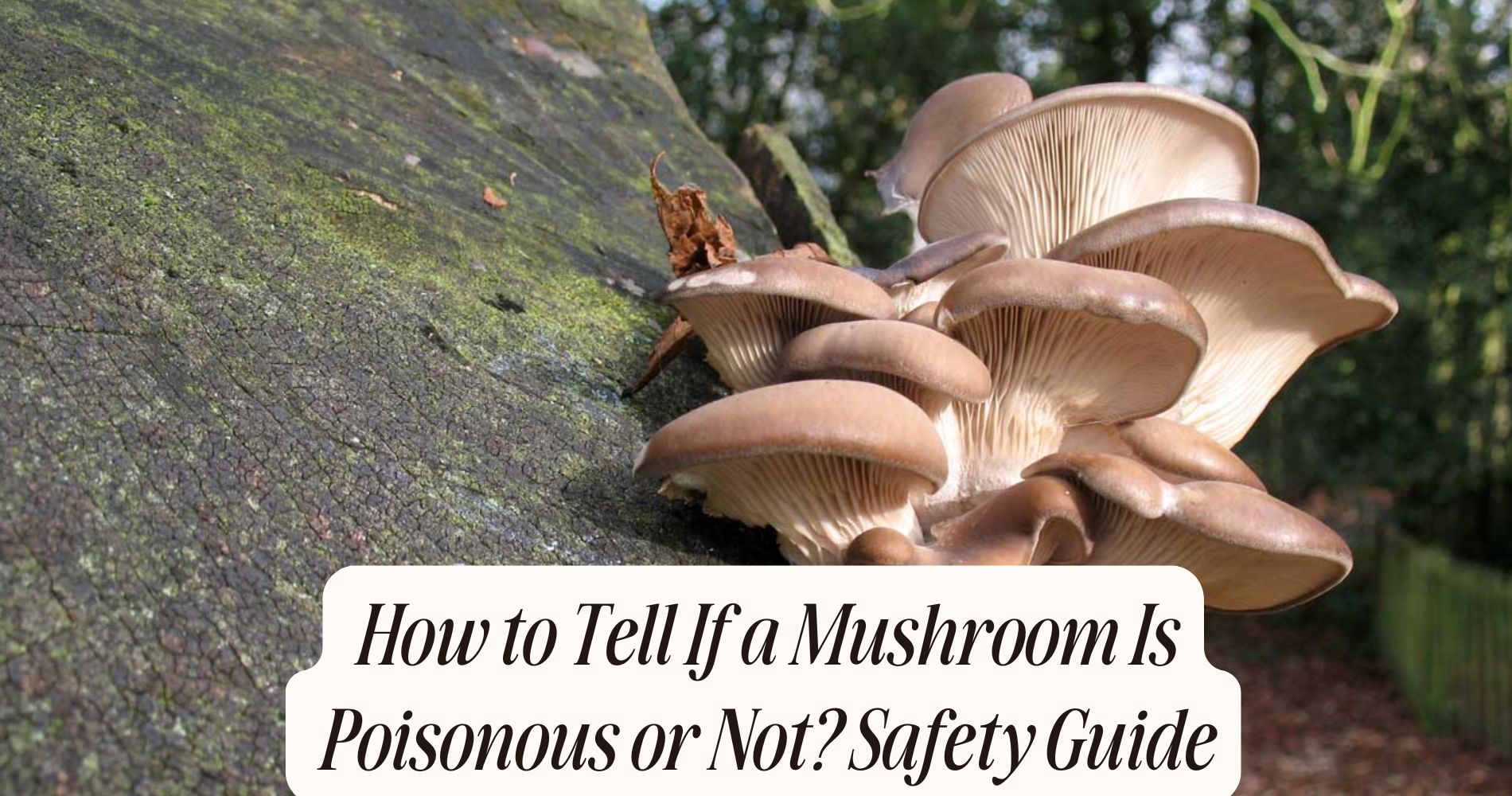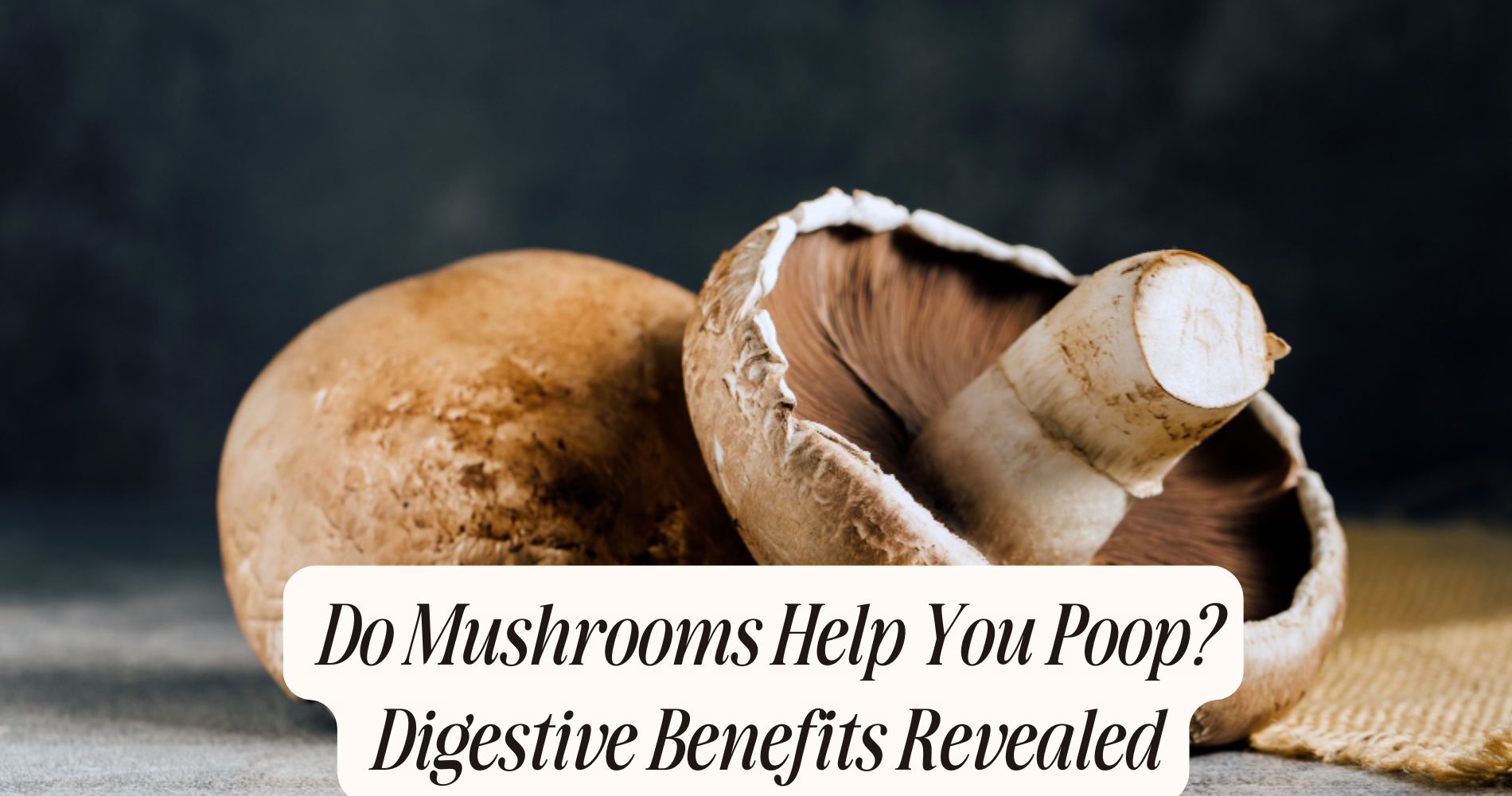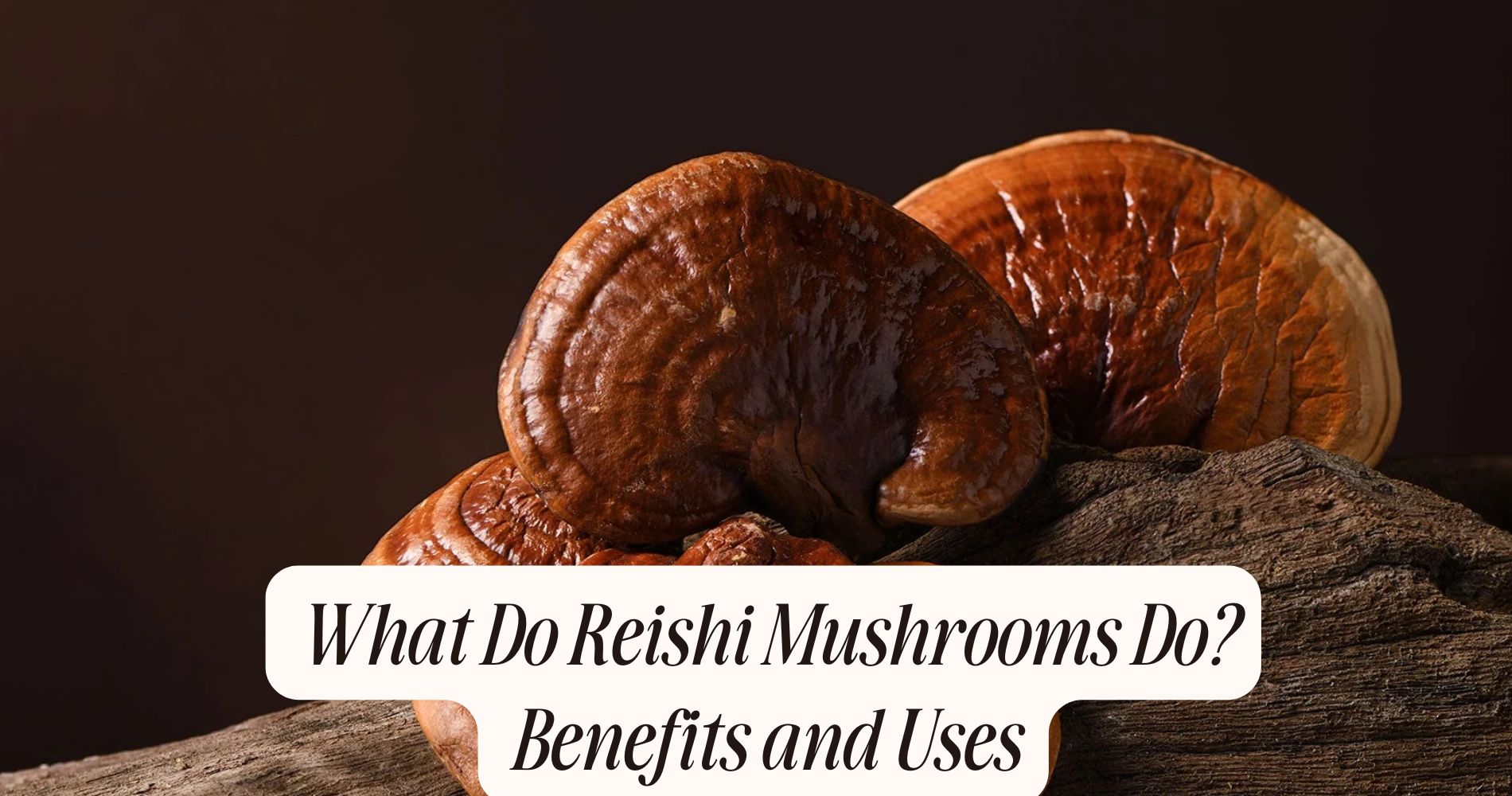
How to Tell If a Mushroom Is Poisonous or Not? Safety Guide
How to tell if a mushroom is poisonous or not? To tell if a mushroom is poisonous, closely examine its cap, gills, and stem. Bright colors, slimy textures, and white spore prints often indicate toxicity. Be cautious of mushrooms with gills attached to the stem, as many poisonous varieties share this trait. Always compare potential finds with reliable field guides and seek guidance from experienced foragers. Remember, proper identification is critical for safety. Learn more about distinguishing edible mushrooms and understanding common toxic look-alikes.
Understanding Mushroom Anatomy
Mushrooms, the fruiting bodies of fungi, exhibit distinct anatomical features that are essential for identification. Understanding mushroom morphology involves examining structures such as the cap, gills, stem, and mycelium.
The cap, or pileus, varies in shape and color, providing key identification clues. Underneath, gills or pores release spores, vital for reproduction. The stem, or stipe, supports the cap and can differ in thickness, texture, and color.
Fungal anatomy also includes the mycelium, which is the network of hyphae that forms the bulk of the fungus underground. By closely observing these features, you can identify various mushroom species accurately.
Familiarizing yourself with these anatomical characteristics is important for safe mushroom identification and consumption.
Common Characteristics of Poisonous Mushrooms
Certain mushrooms possess distinctive characteristics that can signal their toxicity. You should look out for specific toxic traits, such as bright colors, which often indicate danger.
Many poisonous mushrooms belong to well-known mushroom families, like Amanita and Cortinarius, which have unique features, including gills that are attached to the stem. Additionally, some toxic varieties exhibit a slimy or sticky cap, while others may have a distinctive odor.
Be cautious of mushrooms with white spore prints, as many harmful species share this trait. Finally, mushrooms that change color when bruised or cut can also indicate toxicity.
Familiarizing yourself with these common characteristics can help you avoid potentially dangerous mushrooms in the wild.
Edible vs. Poisonous: Key Differences
When identifying mushrooms, you need to pay attention to key differences between edible and poisonous varieties.
Color and shape variations, the structure of gills, and spore prints are essential indicators, along with habitat and environmental factors.
Understanding these elements can greatly enhance your ability to distinguish safe mushrooms from harmful ones.
Color and Shape Variations
Identifying the color and shape of mushrooms can be essential for distinguishing between edible and poisonous varieties.
Color significance plays a critical role; for instance, bright colors often indicate toxicity, while more muted tones may suggest edibility. However, this isn't a hard rule, and exceptions exist.
Shape classification also aids in identification; mushrooms can be categorized as caps, funnels, or puffballs, each with distinct features.
For example, cap-shaped mushrooms like chanterelles are generally safe, while similar-looking species, such as the fly agaric, can be deadly.
Always compare known edible species with unfamiliar ones to notice these key differences. Keeping a field guide handy can enhance your identification skills and guarantee your safety when foraging.
Gills and Spore Prints
Understanding the gills and spore prints of mushrooms is essential for distinguishing edible varieties from poisonous ones. The gill shapes can vary considerably; for instance, some mushrooms have free gills that don't touch the stem, while others feature attached gills. Observing these differences can provide important identification clues.
Spore patterns, obtained by placing a cap on paper overnight, can also be telling. Edible mushrooms often produce spores in specific colors—white, brown, or black—while many toxic varieties yield distinct, unusual colors.
Habitat and Environment Factors
While many factors contribute to mushroom classification, habitat and environmental conditions play a crucial role in distinguishing edible species from their toxic counterparts. Understanding mushroom ecosystems is essential; different species thrive in specific environments, such as forests, grasslands, or wetlands.
For instance, edible mushrooms often prefer nutrient-rich soils and specific moisture levels, whereas toxic varieties may flourish in less hospitable conditions. Environmental impacts, like pollution and climate change, can also alter these habitats, affecting mushroom growth and toxicity.
When foraging, consider the surroundings—avoid mushrooms growing near contaminated areas or those exposed to agricultural chemicals. By paying attention to these factors, you can better assess the safety of the mushrooms you encounter in the wild.
The Role of Color and Texture
When evaluating a mushroom's edibility, color variations and texture play essential roles.
You should observe the mushroom's surface for specific patterns and characteristics, as these can indicate whether it’s safe to consume.
Understanding these visual cues will enhance your ability to identify potentially poisonous mushrooms effectively.
Color Variations and Indicators
Although not all colorful mushrooms are toxic, color variations and texture play an essential role in identifying potentially hazardous species. The color significance of mushrooms often indicates their edibility or toxicity.
For instance, bright hues like red or orange can signal danger, while earth tones may suggest safety. Pay attention to hue variations; subtle differences in shade can distinguish safe mushrooms from toxic ones.
For example, some edible species may have a slight yellowish tint, while their poisonous counterparts appear more vibrant.
Always remember, though, that color alone isn't definitive. Combine your observations of color with other identification methods to guarantee safety.
Stay informed and cautious when foraging, as misidentification can have serious consequences.
Texture Characteristics to Observe
Color and texture often work hand in hand in mushroom identification. When observing a mushroom, pay close attention to texture variations, as they can provide critical clues about its edibility.
For instance, a smooth surface might indicate safety, while a sticky or slimy texture could suggest potential toxicity. Examine the cap and stem for any distinctive surface patterns; these can differentiate edible species from their poisonous counterparts.
Additionally, rough or fibrous surfaces may signal a mushroom’s identity. Always remember that relying solely on texture isn’t enough; combine it with color observations for a more accurate assessment.
Patterns and Surface Examining
While examining a mushroom, recognizing patterns and surface characteristics is essential for identifying its edibility. Pay close attention to the mushroom patterns you encounter; these can vary considerably among species.
For example, some mushrooms exhibit spots, stripes, or mottled designs that can indicate toxicity. Additionally, you should analyze the surface textures. A smooth cap may suggest safety, while a scaly or sticky surface can signal caution.
Observe color variations as well; vibrant hues may be a warning sign. Always take note of any irregularities in both patterns and textures, as these can be vital indicators of a mushroom’s safety.
Toxic Look-Alikes: Identifying Risks
When foraging for mushrooms, it's essential to recognize that many edible varieties have toxic look-alikes that can pose serious health risks. Toxic species often share similar characteristics with benign mushrooms, making accurate identification critical.
For example, the Death Cap (Amanita phalloides) resembles several edible species, yet ingestion can be fatal. Pay particular attention to key features such as cap shape, gill attachment, and spore color.
Look alike mushrooms can also vary by region and season, so consult reliable field guides or local experts. Always err on the side of caution; if you're unsure about a mushroom's identity, it's best to avoid consuming it altogether.
Seasonal Considerations for Foraging
Understanding seasonal considerations for foraging is fundamental to your success and safety. Different mushrooms thrive in specific seasons, so knowing the seasonal timing is essential.
Spring and fall are typically the best times for foraging, as these seasons provide ideal moisture and temperature conditions for mushroom growth.
Weather effects play a significant role; rain followed by warm temperatures can trigger rapid mushroom proliferation. Conversely, dry spells can hinder growth, making it critical to monitor weather patterns.
Additionally, certain species may only emerge after particular environmental changes, like frost or heavy rain. By staying informed about seasonal timing and weather effects, you can enhance your foraging experience and reduce the risk of encountering poisonous mushrooms.
Always exercise caution and verify your finds.
Importance of Spore Prints
Understanding spore prints is essential for identifying mushroom species and determining their edibility.
By examining the color and pattern of the spore print, you can gain valuable insights into the mushroom's classification.
This knowledge is vital for distinguishing between safe and potentially dangerous varieties.
Understanding Spore Color
How can you confidently identify a mushroom’s edibility? One effective method is through spore print analysis.
By placing a mushroom cap gill-side down on a piece of paper, you can collect its spores. Once the cap is removed, you'll observe the spore print's color, which can vary widely among species.
This color differentiation is important, as certain edible and poisonous mushrooms share similar appearances but differ in spore color. For instance, a white spore print may indicate edible species, while a dark print could suggest toxicity.
Always document the spore color when identifying mushrooms, as it’s a significant characteristic that aids in distinguishing between safe and harmful varieties. Understanding spore color is an essential step in mushroom foraging safety.
Identifying Mushroom Species
While many factors contribute to accurately identifying mushroom species, spore prints play an essential role in distinguishing between edible and toxic varieties.
By collecting a spore print, you can reveal the color and characteristics of the spores, which are vital for mushroom taxonomy and species classification. To obtain a spore print, place the cap of a mushroom gill-side down on a sheet of paper for several hours. The resulting print will indicate the spore color, aiding in identification.
Different species release spores of varying colors, which can help you differentiate between similar-looking mushrooms. Remember, a thorough understanding of spore prints can greatly enhance your ability to identify mushrooms safely and confidently.
Always consult reliable resources for accurate identification.
Myths and Misconceptions About Mushroom Foraging
Many people believe that all mushrooms with bright colors are toxic, but this is a misconception that can lead to unnecessary fear and missed opportunities for safe foraging.
Myth debunking is essential in mushroom foraging; some vibrant mushrooms are indeed edible and nutritious.
Another common myth is that mushrooms growing on trees are poisonous, while many are safe and delicious.
Additionally, the idea that you can identify toxic mushrooms solely by taste or smell is dangerously inaccurate.
Foraging safety hinges on proper identification and understanding species, not on assumptions.
Always research thoroughly and consult reliable guides or experts before consuming wild mushrooms to avoid the pitfalls of these misconceptions.
Knowledge is your best tool for safe foraging.
Best Practices for Safe Mushroom Hunting
To guarantee a successful and safe mushroom hunting experience, it's essential to equip yourself with the right knowledge and tools before heading into the wild.
Start by researching local mushroom species, focusing on edible varieties, and their toxic look-alikes. Use quality field guides or apps for accurate identification.
When foraging, carry a knife for harvesting, a basket for collection, and gloves for handling. Always follow safety precautions: avoid picking mushrooms in contaminated areas, and never consume anything you're unsure about.
Keep a journal to track your finds and experiences, enhancing your knowledge over time.
Finally, consider foraging with experienced individuals to gain firsthand mushroom foraging tips. This way, you’ll minimize risks while enjoying your adventure in nature.
Resources for Mushroom Identification
Having the right resources for mushroom identification is essential for safe foraging. Start with field guides tailored to your region; they offer detailed descriptions and images of local species.
Supplement these with online resources, such as reputable websites and databases, that provide up-to-date information. Joining expert forums can also be invaluable, allowing you to ask questions and share findings with seasoned foragers.
Consider attending local workshops, where experienced mycologists teach identification techniques and safety tips. Additionally, identification apps can assist in recognizing mushrooms quickly by analyzing photos you take in the field.
Leveraging these resources will enhance your skills and confidence, ensuring you make informed decisions when foraging for mushrooms. Stay safe and informed!
Stay Safe and Energized with SUPER MUSHROOM GUMMIES
Looking for a convenient way to enjoy the benefits of mushrooms without the risk of toxicity? Well Gummies’ SUPER MUSHROOM GUMMIES are packed with 10 functional mushrooms to fuel your brain, enhance focus, and support your immune system naturally. These vegan gummies are a delicious, easy-to-use alternative, providing energy without jitters or crashes. With a fresh wild berry flavor, they taste like your favorite candy, keeping you energized and balanced all day long. Stay sharp and healthy with SUPER MUSHROOM GUMMIES!
Frequently Asked Questions
Can Cooking Mushrooms Make Poisonous Ones Safe to Eat?
Cooking mushrooms doesn't guarantee safety. Poisonous compounds often remain intact despite various cooking methods. Proper mushroom preparation is essential; always identify mushrooms accurately before consumption to avoid potential toxicity, as cooking won't neutralize harmful substances.
What Should I Do if I Suspect Mushroom Poisoning?
If you suspect mushroom poisoning, recognize symptoms like nausea or confusion. Immediately seek emergency response. Provide any mushroom samples to medical personnel to assist with diagnosis and treatment, ensuring a faster and more effective response.
Are There Mushrooms That Are Safe for Pets?
Some mushrooms are safe for pets, but others pose significant mushroom toxicity risks. Always research specific types before allowing your pet to interact with them, prioritizing pet safety to prevent potential health issues.
How Can I Store Mushrooms Safely After Foraging?
To store mushrooms safely after foraging, use proper mushroom preservation techniques. Keep them in a paper bag in the fridge, and remember these foraging storage tips: avoid washing until you’re ready to use them.
Do Mushrooms Grown in My Garden Pose a Risk?
Yes, mushrooms in your garden can pose risks. Proper mushroom identification is essential; some edible varieties resemble toxic ones. Always prioritize garden safety by consulting experts or resources before consuming any mushrooms you find.
Conclusion
Ultimately, identifying poisonous mushrooms requires keen observation and knowledge of their anatomy and characteristics. Always compare edible species with their toxic look-alikes, paying close attention to color, texture, and spore prints. Don't rely on myths; instead, follow best practices and use reliable resources for identification. By staying informed and cautious, you can enjoy mushroom foraging while minimizing the risks associated with poisonous varieties. Remember, when in doubt, it's best to avoid consumption altogether.




